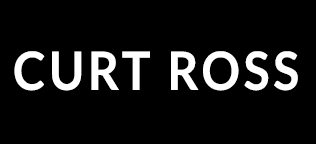Curt was born in Benton Harbor on the shores of Lake Michigan. His father Malcolm was a businessman, and his mother Claudine a painter. When asked when he began to paint, Curt would say, liAs long as I can remember, from childhood.” At school he excelled in his art classes which, given his rebellious spirit, were probably his only motivation for finishing high school.
Curt left Benton Harbor for Chicago in 1960, where he spent two years studying at the Academy of Fine Arts. The Academy emphasized commercial art, a direction that held no interest for him. One of his teachers then suggested that he enroll in The Art Students League in New York. He studied at the league from 1962 to 1968, and there Curt’s artistic vision broadened, expanding from his Midwestern roots to a more sophisticated view of his surroundings.
The most influential of his teachers were Edwin Dickinson, Harry Sternberg, and Seong Moy. It was at this time that he painted New York Subway (1966), Man with Milk Carton (1968), Sink I (1965), and The Ticket Taker I (1967). He spent summers in Provincetown where Dickinson and Sternberg held summer workshops. Edwin Dickinson, Professor Emeritus Art Students League, had a major influence on his work which can be seen in The Female Nude (1968), New York Streets (1967), View From the Studio (1965), and Man With a Beer Can (1966). Starting in 1965 Curt also began to keep what became a lifelong diary of notebooks and journals, in which he recorded ideas and sketches for future works, as well as reflections on life and the artist’s pursuit.
In 1968 Curt took a trip with long-time Michigan friend Buzz Erikson and fellow student Dennis Hicks. They left New York and traveled through Canada to Seattle, California, and Mexico. He returned to New York, made plans to relocate to California, and moved to Mill Valley in the summer of 1968. It was there that he and Buzz Erikson started the RossErikson Publishing Company producing books on anthropology, comparative religion, and Eastern consciousness. The most important of these was Maria Sabina: Her life and Her Chants (1981). Curt did illustrations and designed book covers, including Robert Gover’s Tomorrow Now Occurs Again (1975), and An Open Path (1982) by Jack Beeching. He also designed the 1978 Ross-Erikson calendar. He had a great love of books and enjoyed surrounding himself with hundreds of volumes. He was particularly enchanted by the work of Ernest Hemingway.
It was in California that Curt met his wife Kathryn Steeves. In 1974 they took a year off and traveled around the world. He was heavily influenced by scenes and people they encountered in the streets of Asia, particularly the War Museum of Benares and the ancient Buddhist caves of Bamian in Afghanistan. When they returned to California in 1975 he began work on The Afghanis (1976) and The Third Battle of Panipat (1977-78).
In 1978 Curt and Kathryn moved to the San Juan Islands in Washington State. He once again lived on the water as he had as a child in Michigan, surrounded by madrone trees, Douglas fir, and his wife’s flower gardens. This was a period of amazing growth in Curt’s work – his palette became intense. He liked to experience direct contact with his subject matter, and from May to October, he would paint outdoors. Poppies (1998), Foxgloves (1997), Red Poppies and Clematis (1998), Field of Sunflowers (1996)
The madrones fascinated him; he tried to capture their varied colors in July and August as their bark peeled and leaves turned yellow and fell.
Curt also received a few portrait commissions, but portraiture was not his favorite pursuit. He recorded in one of his notebooks John Singer Sargent’s rueful observation: “Every time I paint a portrait, I lose a friend.” yet Curt painted several self-portraits, using them as a means to get back to work when returning from his travels, which through the years ranged all over Europe as well as Thailand, China, and a car trip in Morocco, when he drove to the border of Mali.
When the weather turned foul Curt would work in the studio, where his outdoor paintings became background subjects for two of his larger pieces, Clarence (1999), and the unfinished Monet, begun in 1997. It was in this studio work that he dedicated time in later years to more political subject matter which always carried the imprint of his amazing sense of humor, reflecting his social and political ideas with insightful realism. The Terrorists (1998), The Computer Head (1997), Evening News I (1999), and the unfinished Evening News II (2000) are among such later works.
Curt’s paintings provided openings; allowing viewers to enter them, travel within them, and interpret their own experiences of them. If art is an expression of life, then Malcolm curtis Ross certainly enjoyed the life he led with art.
Education:
Art Students League, New York, 1963 – 1968
Chicago Academy of Fine Arts, Chicago 1962 – 1963
Exhibitions:
Memorial Show, waterworks gallery, Friday Harbor, WA,2002
Different Drummer, waterworks gallery, Friday Harbor, 1994
Power of Myth, waterworks gallery, Friday Harbor,1990
First Annual Cigar Box Exhibition, waterworks gallery, 1989
San Juan Community Theatre, Friday Harbor, 1989
Trumpeter Gallery, Friday Harbor, WA, 1986
Sweetwater Gallery, Mill Valley, CA, 1976
Callaban Gallery, New York, NY, 1976
Publications:
Ross-Erickson Calendar, 1978
Tomorrow Now Occurs Again, 1978
Public Collections:
Duck Soup, San Juan Island, WA
and numerous private collections worldwide


